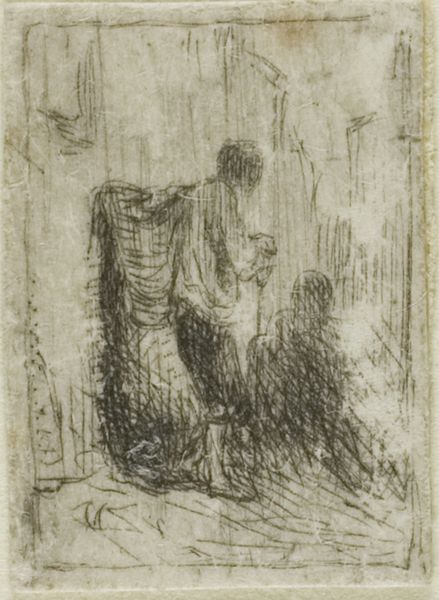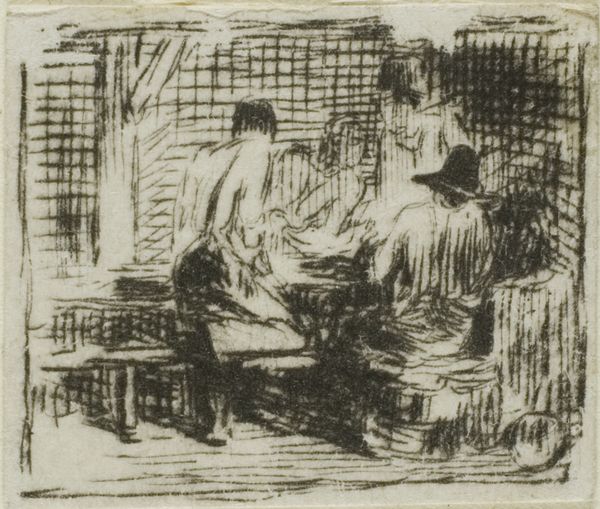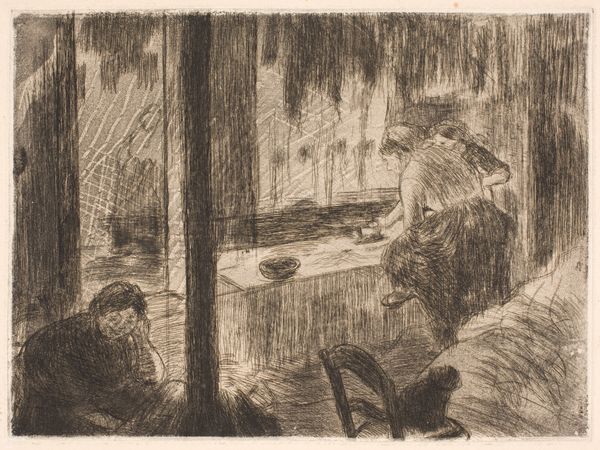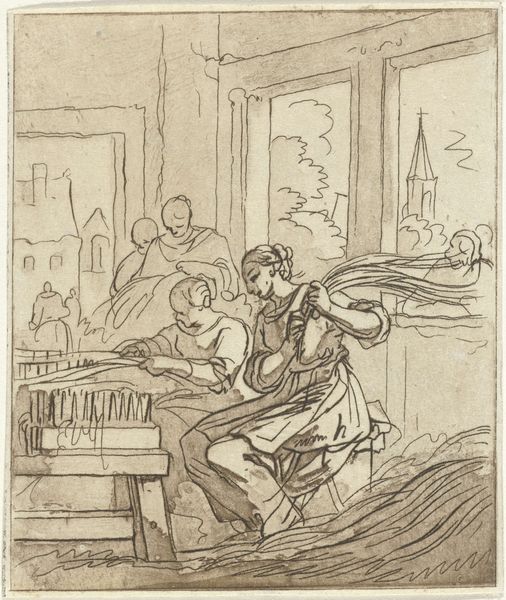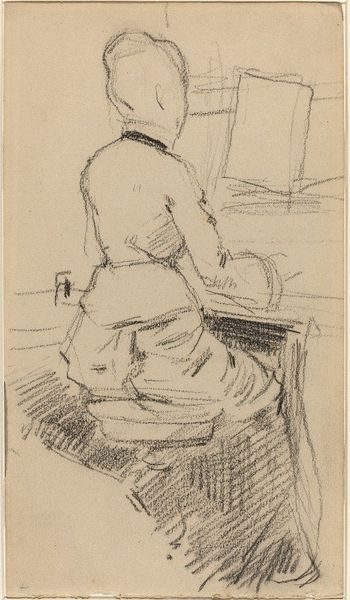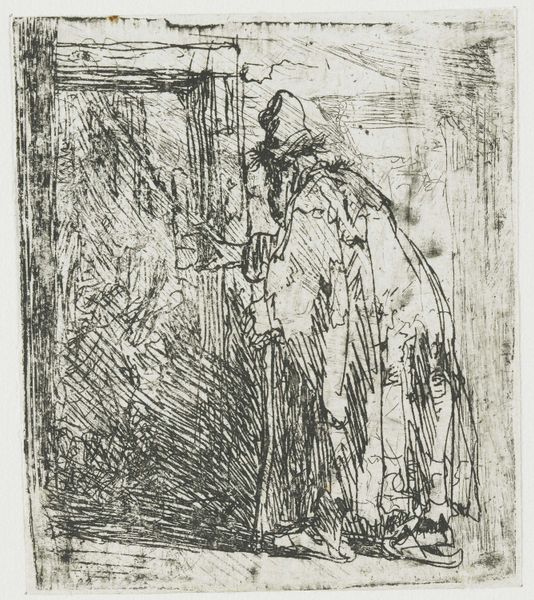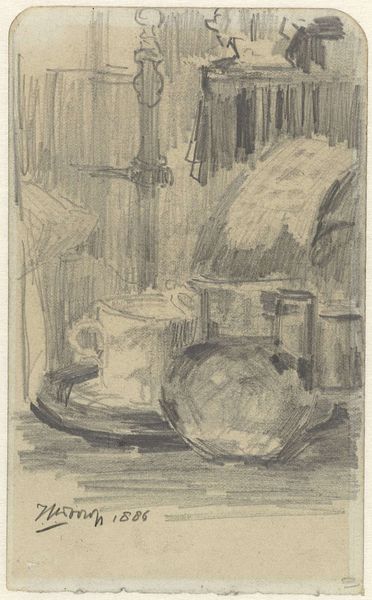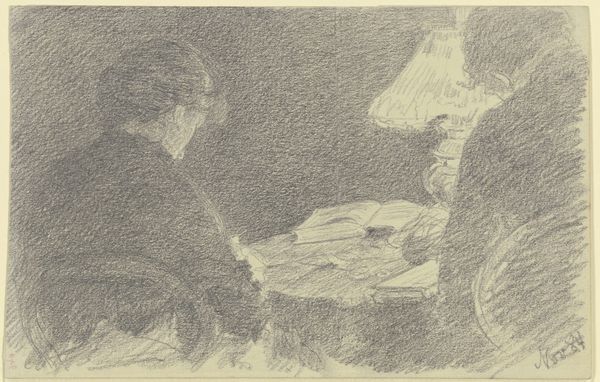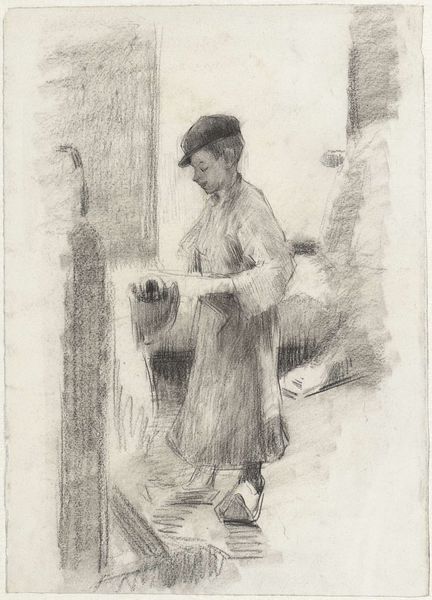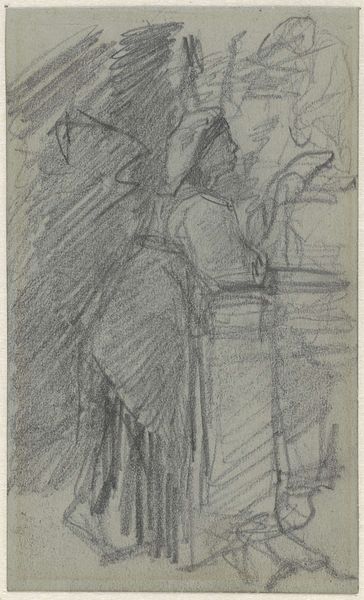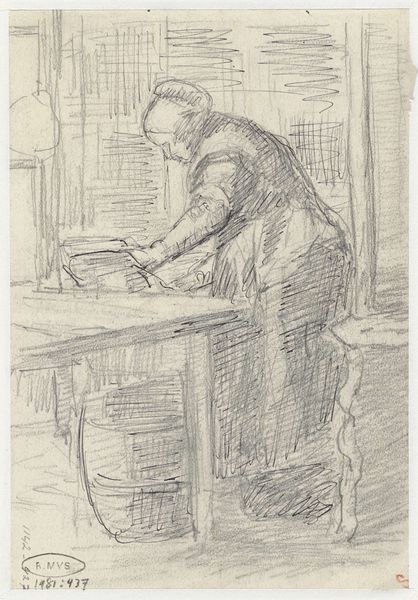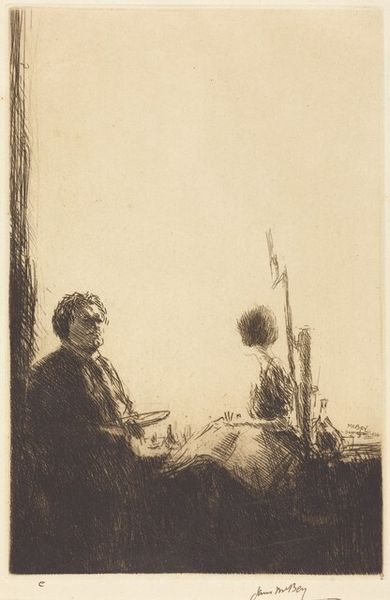
drawing, pencil
#
drawing
#
pencil sketch
#
landscape
#
pencil
#
genre-painting
#
realism
Dimensions: height 270 mm, width 162 mm
Copyright: Rijks Museum: Open Domain
Curator: Anthon Gerhard Alexander van Rappard created this pencil drawing sometime between 1868 and 1892. It’s called “Working Man in the Cotton Dye Works.” My first impression? The overall mood is one of muted intensity, of quiet labor. Editor: Absolutely. It feels stark. There's a raw honesty in Rappard's depiction, wouldn’t you say? You feel the weight of the worker’s presence and also, in some way, their anonymity. There’s a facelessness that speaks volumes about the working class. Curator: I do agree. He is positioned with his back to us; he's defined only by his labor, yes, but it also feels like a moment of intimate observation that we get to glimpse. Like he's allowing us in. I almost feel intrusive staring at him. Editor: Exactly, and in its stark realism, Rappard's piece highlights the socio-economic conditions of the time, giving a voice—or at least a visual presence—to those often rendered invisible. The back view invites reflection on labor exploitation and dehumanization. What is his emotional world here, as a result of this? Curator: It’s all these layered shadows, that I almost find hard to explain in a historical context like a museum audio guide. Is he simply busy or burdened beyond bearing? And how complicit am I as a spectator. It’s like a tight chord. It has that humming vibration, like a tight string about to be plucked! Editor: Precisely, those layered shadows, and his posture… it makes you wonder about the social commentary embedded in this seemingly simple sketch. The back, as you mention, turns him into every working man… their toil and the sacrifices in the backdrop. The composition echoes their collective narrative. It critiques the human toll of industrial progress. Curator: You always give the richest context. For me, I suppose it really does come down to those layered pencils – how the simplest materials become imbued with heavy feeling. How about that? Editor: And how about the need for such historical art as continued social commentary.
Comments
No comments
Be the first to comment and join the conversation on the ultimate creative platform.

